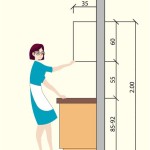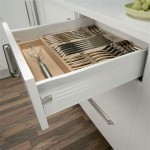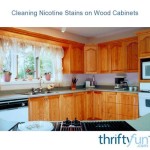Colors For Painting Kitchen Cabinets: A Comprehensive Guide
The kitchen is often considered the heart of the home, a space where meals are prepared, conversations are shared, and memories are made. The aesthetic of the kitchen, particularly the color of the cabinets, plays a significant role in setting the overall tone and ambiance. Choosing the right cabinet color can transform a dated or uninspired kitchen into a stylish and inviting space. However, selecting the perfect color is a complex process that requires careful consideration of various factors, including existing décor, personal preferences, and current trends.
This article will delve into the nuances of choosing colors for painting kitchen cabinets. It will explore various color families, discuss the impact of different finishes, and provide practical advice on how to select the best color to achieve a desired aesthetic. The goal is to provide readers with a comprehensive understanding of the factors that influence cabinet color selection, empowering them to make informed decisions and create a kitchen that reflects their individual style and complements their home.
Understanding the Color Wheel and its Application
The color wheel is a fundamental tool for understanding color relationships and how different colors interact with each other. It consists of twelve colors, encompassing primary colors (red, yellow, blue), secondary colors (green, orange, violet) which are created by mixing two primary colors, and tertiary colors, which are created by mixing a primary and a secondary color. Comprehending these relationships is crucial for creating a harmonious and balanced color scheme in the kitchen.
Complementary colors, located directly opposite each other on the color wheel (e.g., red and green, blue and orange), create a vibrant and dynamic contrast. Using complementary colors can add visual interest to the kitchen, but it's important to use them judiciously to avoid overwhelming the space. Analogous colors, located next to each other on the color wheel (e.g., blue, blue-green, green), create a more subtle and harmonious effect. This approach is ideal for creating a calming and serene kitchen environment.
Monochromatic color schemes, using different shades and tints of a single color, can create a sophisticated and elegant look. This approach is particularly effective in smaller kitchens, as it helps to create a sense of spaciousness. When using a monochromatic scheme, it's important to incorporate texture and variation to prevent the space from feeling flat or monotonous. Neutral colors, such as white, gray, and beige, provide a versatile backdrop for introducing pops of color through accessories and appliances. Neutral cabinets are a timeless choice that can be easily updated with changing trends.
Exploring Different Color Families for Kitchen Cabinets
Choosing the right color family is a critical step in the cabinet painting process. Each color family evokes a different mood and can significantly impact the overall aesthetic of the kitchen. Understanding the characteristics of each color family is essential for making an informed decision that aligns with personal preferences and the desired ambiance.
White Cabinets: White cabinets are a classic and timeless choice that offers numerous benefits. White reflects light, making the kitchen feel brighter and more spacious. It's a versatile color that complements a wide range of architectural styles and design schemes. White cabinets provide a clean and minimalist backdrop that allows other elements in the kitchen, such as countertops, backsplashes, and appliances, to take center stage. While white is a versatile choice, it's important to consider the specific shade of white. Warm whites, with yellow or beige undertones, create a cozy and inviting atmosphere. Cool whites, with blue or gray undertones, offer a more modern and sophisticated look. The choice between warm and cool white should be guided by the existing décor and the desired overall aesthetic.
Gray Cabinets: Gray cabinets have become increasingly popular in recent years, offering a sophisticated and contemporary alternative to white. Gray is a versatile neutral that can be paired with a wide range of colors and materials. It's a calming and sophisticated color that can create a sense of tranquility in the kitchen. Like white, gray comes in a variety of shades, ranging from light and airy to dark and dramatic. Light gray cabinets are a great option for smaller kitchens, as they help to create a sense of spaciousness. Dark gray cabinets can add drama and sophistication to larger kitchens. When choosing a gray paint color, it's important to consider the undertones. Some grays have warm undertones, while others have cool undertones. The undertones should complement the existing décor and the desired overall aesthetic.
Blue Cabinets: Blue cabinets can add a touch of personality and charm to the kitchen. Blue is a calming and serene color that can create a relaxing atmosphere. It's a versatile color that can be used in a variety of design styles, from traditional to modern. Light blue cabinets can create a coastal or cottage-inspired feel, while dark blue cabinets can add a touch of sophistication and elegance. Navy blue cabinets, in particular, have become increasingly popular, offering a bold and dramatic alternative to traditional neutrals. When choosing a blue paint color, it's important to consider the shade and undertones. Lighter blues can make a small kitchen feel larger, while darker blues can create a more intimate and cozy atmosphere.
Green Cabinets: Green cabinets have experienced a surge in popularity, reflecting a growing desire to connect with nature and bring a touch of the outdoors inside. Green is a refreshing and invigorating color that can create a sense of harmony and balance in the kitchen. It's a versatile color that can be used in a variety of design styles, from rustic to modern. Light green cabinets can create a fresh and airy feel, while dark green cabinets can add a touch of drama and sophistication. Forest green cabinets, in particular, have become increasingly popular, offering a bold and earthy alternative to traditional colors. When choosing a green paint color, it's important to consider the shade and undertones. Olive green, for example, has warm undertones, while mint green has cool undertones. The undertones should complement the existing décor and the desired overall aesthetic.
Wood Tone Cabinets: While not technically a paint color, wood tone cabinets offer a timeless and natural aesthetic. Wood cabinets can add warmth and character to the kitchen, creating a cozy and inviting atmosphere. The choice of wood species and stain color can significantly impact the overall look and feel of the kitchen. Light wood cabinets, such as maple or birch, can create a bright and airy feel. Dark wood cabinets, such as cherry or walnut, can add a touch of sophistication and elegance. When choosing wood cabinets, it's important to consider the grain pattern and the overall tone of the wood. The wood tone should complement the existing décor and the desired overall aesthetic.
The Impact of Paint Finishes on Cabinet Appearance
The paint finish plays a crucial role in the overall appearance and durability of kitchen cabinets. Different finishes offer varying levels of sheen, durability, and ease of cleaning. Selecting the appropriate finish is essential for achieving the desired aesthetic and ensuring the longevity of the paint job.
Matte Finish: Matte finishes have very little to no sheen, creating a soft and understated look. They are ideal for minimizing imperfections and creating a smooth and uniform surface. However, matte finishes are less durable and more difficult to clean than other finishes. They are more susceptible to stains and scratches, making them less suitable for high-traffic areas like kitchen cabinets. Matte finishes are best suited for cabinets that are not frequently touched or exposed to moisture.
Eggshell Finish: Eggshell finishes have a low sheen, similar to the surface of an eggshell. They offer a slightly more durable and easier-to-clean surface than matte finishes. Eggshell finishes are a popular choice for kitchen cabinets, as they provide a balance between aesthetics and practicality. They are resistant to mild stains and scuffs, making them suitable for everyday use. However, eggshell finishes can still show imperfections, so it's important to properly prepare the cabinet surfaces before painting.
Satin Finish: Satin finishes have a medium sheen, creating a smooth and elegant look. They are more durable and easier to clean than eggshell finishes, making them a good choice for high-traffic areas like kitchen cabinets. Satin finishes are resistant to stains, scuffs, and moisture, making them suitable for kitchens where spills and splatters are common. They also offer a moderate level of light reflection, which can help to brighten up the kitchen.
Semi-Gloss Finish: Semi-gloss finishes have a high sheen, creating a shiny and reflective surface. They are the most durable and easiest-to-clean finish for kitchen cabinets. Semi-gloss finishes are resistant to stains, scuffs, moisture, and grease, making them ideal for kitchens where cleanliness is a priority. They also offer the highest level of light reflection, which can help to make a small kitchen feel larger. However, semi-gloss finishes can accentuate imperfections, so it's important to properly prepare the cabinet surfaces before painting.
High-Gloss Finish: High-gloss finishes have the highest sheen, creating a mirror-like surface. They are extremely durable and easy to clean, but they are also the most prone to showing imperfections. High-gloss finishes are often used in modern and contemporary kitchens to create a sleek and dramatic look. However, they can be overwhelming in larger kitchens or kitchens with a lot of natural light. High-gloss finishes require meticulous surface preparation to ensure a flawless finish.
When choosing a paint finish for kitchen cabinets, it's important to consider the desired aesthetic, the level of durability required, and the ease of cleaning. Satin and semi-gloss finishes are generally the best choices for kitchen cabinets, as they offer a good balance between aesthetics and practicality. However, the specific finish should be chosen based on individual preferences and the specific needs of the kitchen.

Popular Kitchen Cabinet Paint Colors West Magnolia Charm

Kitchen Cabinet Paint Ideas

Most Popular Cabinet Paint Colors Taupe Kitchen Cabinets Decor

How To Choose Kitchen Cabinet Paint Colors
:strip_icc()/painted-kitchen-cabinet-ideas-20-becca-interiors-southampton-0b04a571a07649deb33edae1e89d9c41.jpeg?strip=all)
29 Painted Kitchen Cabinet Ideas You Can Easily Copy

Cabinet Paint Color Trends And How To Choose Timeless Colors Kitchen Interior Design

How To Paint Kitchen Cabinets Best Color Ideas Cost

38 Popular Colors To Paint Kitchen Cabinets Amber Oliver

How To Paint Kitchen Cabinets

70 Top Kitchen Paint Colors Best 2024
Related Posts








